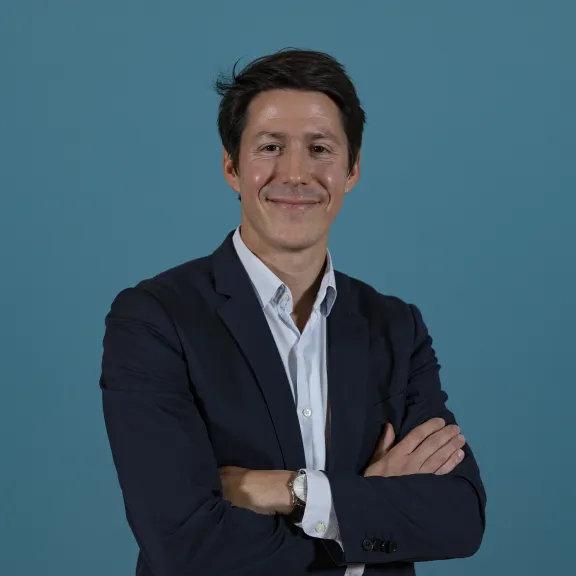Pierre Seners Predicting the evolution of strokes to personalize treatment
Pierre Seners, neurologist and neuroscience researcher in Gregory W. Albers’ laboratory at the Wu Tsai Neurosciences Institute, Stanford, California
- 2021 • Bettencourt Prize for Young Researchers

The 2021 Bettencourt Prize for Young Researchers was awarded to neuroscientist Pierre Seners for his work on strokes.
Consequences of stroke
A stroke is the sudden loss of cerebral function caused by a blocked blood vessel in the brain. In France, it is the leading cause of acquired physical disability in adults. Despite new, highly effective therapies, strokes still have major consequences because of the damage that gradually occurs in the period before treatment, which can be long if patients are moved from one hospital to another (the most common situation worldwide).
To limit the progression of brain damage during the move, it is important to be able to predict which patients are most susceptible to it.
Brain imaging to predict lesion progression
In Gregory W. Albers’ laboratory at the Wu Tsai Neurosciences Institute, Dr. Seners will build several models to predict the rate of progression of brain lesions based on images obtained by two methods commonly used to diagnose strokes. He will analyze brain imaging data obtained before and after inter-hospital transfer of patients in the United States (CT images) and France (magnetic resonance imaging). Dr. Seners will use the images to build models to forecast the speed of lesion progression and identify the one with the most accurate prediction.
The study will reliably identify patients at higher risk for rapid lesion progression during inter-hospital transfer. The patients may be included in future therapeutic trials aiming to limit lesion progression, not only in France but also in other countries including the United States, where the imaging technology used to diagnose strokes is different.
Pierre Seners in a few words
Since 2015, neurologist Pierre Seners has divided his time between working in a hospital and doing research at the Saint Anne Hospital Centre and the A. de Rothschild Foundation Hospital neurology department in Paris.
During his PhD work under the direction of Jean-Claude Baron at the Institute of Psychiatry and Neuroscience in Paris, he became interested in treatments to restore blood circulation as quickly as possible after a stroke.
Currently, two treatments are used in succession: injecting a chemical substance to dissolve the clot blocking the blood vessel and extracting the clot mechanically if this treatment is insufficient. However, combining the two treatments is not always necessary and may have harmful side effects.
Pierre Seners uses brain imaging to identify factors that predict the effectiveness of chemical dissolution alone (clot size, for example). Since his PhD, he has actively pursued research on the value of brain imaging in the first hours of a stroke to predict the clinical evolution of patients depending on the treatment administered with a view to personalized treatment.
Bettencourt Prize for Young Researchers
Created in 1990, the Bettencourt Prize for Young Researchers is one of the first initiatives of the Fondation Bettencourt Schueller. Until 2021, this prize was awarded each year to 14 young doctors of science or doctors of medicine, to enable them to carry out their post-doctoral stay in the best foreign laboratories. 349 young researchers were distinguished. The prize endowment was €25,000.
All the award-winners